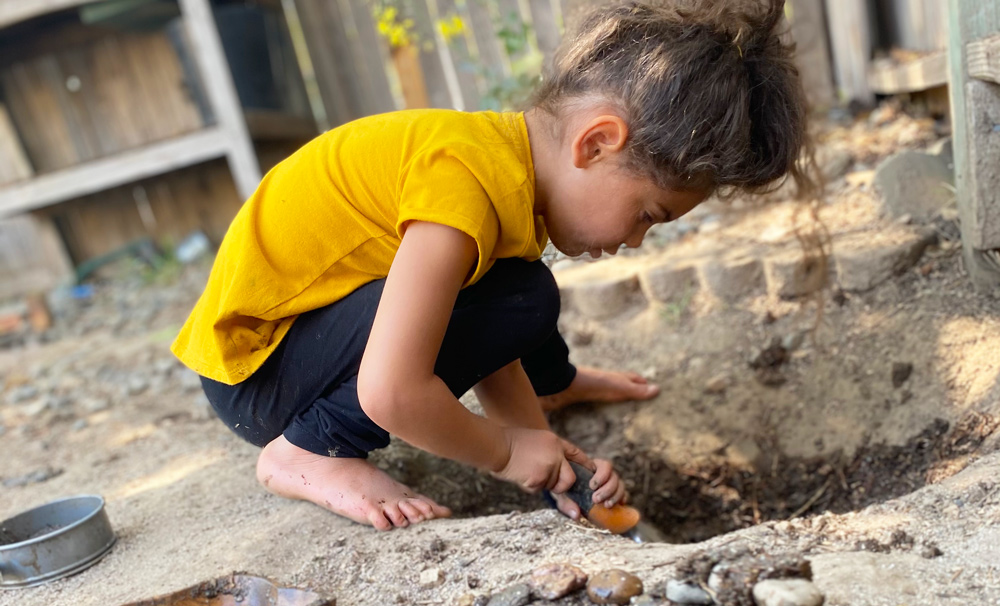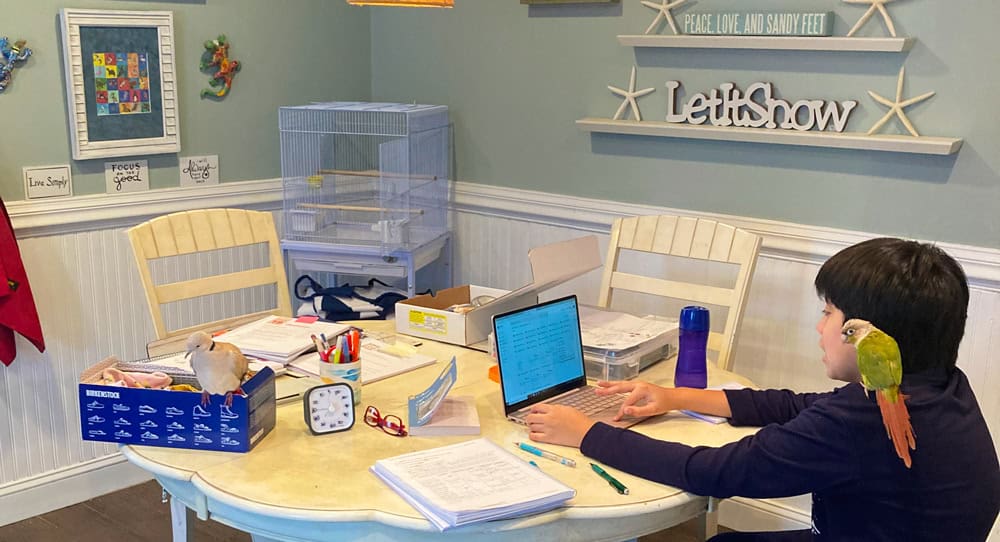
Homeschooling parents often ask how they can help their children learn to work independently. Independence is a skill that grows slowly and needs to be nurtured over time. Students need opportunities to practice repeatedly and gain confidence in their capabilities. They also need to know they can trust that an adult will be ready and available for support when needed.
What is Independent Learning?
In order to support our student’s growing need for independence, it can be helpful to first understand what we mean when we say, “independent learning.” Independent learning is formed around the idea that education is most meaningful for students when they are allowed to cultivate and express their own unique passions and curiosities. It also allows students the flexibility to incorporate those interests into what they are studying.
Fostering independent learning is not simply giving your student the tools to learn on their own, but also helping them understand the relevance and meaning behind their education, which creates an internal drive to learn and succeed.
12 Ways to Foster Student Independence and Autonomy in Learning
This drive for independence exists within all of us, even those students who may seem reluctant to practice this skill. As parents and educators, your main focus should be to stay alert to the needs of your student, giving them the space and support they need to unfold and develop their unique sense of self.
Here are some ways parents and teachers can foster independence in children:
1. Let them pick out their own supplies
“What do you need? What do you like?” Let your child choose materials that bring joy and excitement into their learning. Whether it’s a set of neon markers, a notebook featuring their favorite animated character, or just some brand-new main lesson books, your child will feel a strong sense of ownership over the materials they chose and take extra care to incorporate them into their learning.
2. Have them help plan how to set up their homeschool space
“How would you like to organize your space? You know yourself well; what would work best for you?” Your homeschool space should be a place where your student feels comfortable, safe, and energized. Involve them in the setup and design, and evolve the space as your student makes new discoveries about what works best for them.
3. Help them develop a range of possible options
“What other possibilities could we consider? Can you think of anything else?” Listen when they have suggestions, and offer opportunities for them to share their thoughts and opinions.
4. Support different ways of demonstrating knowledge
“How would you like to share what you’ve learned?” Brainstorm possibilities with the student, let them choose, and then hold them accountable for their choices.
5. Encourage them to use a planner or calendar.
“You’re very capable. Let me show you how you can remind yourself what needs to be done.” Provide a planner, and show them how to use it. Not only does it encourage autonomy, but it also teaches students time management skills.
They can be involved in breaking tasks into smaller increments, prioritizing what needs doing, and checking off items as each task is completed.
6. Keep the schedule flexible
“What do you need to accomplish today? How will you make sure those things get done before tomorrow?” Help your student understand the assignments, activities, and priorities for the week, and then give them the freedom to design their own schedule for accomplishing them.

7. Encourage them to play outdoors
Playing on their own can help foster a sense of independence in children. “Go play outside! I know you can keep yourself occupied. It’s fun to be independent. If you need my support, you can ask.”
8. Let the student define their own goals
Ask questions like, “What standards do you have for yourself?” “How accurate do you think this needs to be?” and “Are you satisfied with your progress?” Don’t demand perfection. Instead, encourage them to set goals that are exciting and inspiring. Write them down, post them in a place where everyone can see them, and make a plan together to achieve them. And most importantly, celebrate when your student achieves their goals, both big and small.
9. Guide them; don’t direct them
“I trust you to figure that out on your own. Let me know if you need help.” Moments of struggle or perceived failure offer opportunities for real learning. Don’t correct them right away. It is important to allow this and to guide your child toward understanding rather than ending the struggle by supplying the answer.
10. Ask open-ended questions
“What do you make of this? What are your thoughts?” Encourage your student to question why they think what they do. Listen attentively to the answers they offer.
11. Give the student control over what they will learn
“What would you like to study? What are you interested in learning more about?” Allow your student to explore—and even struggle—on their own as they seek to understand something or discover a connection. The experience of discovery is a highly motivating factor in learning.
When there are particular learning objectives that need to be met, help them understand educational requirements and encourage them to come up with ways to meet them.
12. Let them learn from their attempts
Ask them, “How did things go? Could you make it better somehow? What do you think?” When they make suggestions for improvement, write them down and incorporate them into future learning.
Fostering independence in children is a valuable skill that parents and educators can help develop over time. By supporting their autonomy, parents and educators can help children become confident, self-directed learners.
